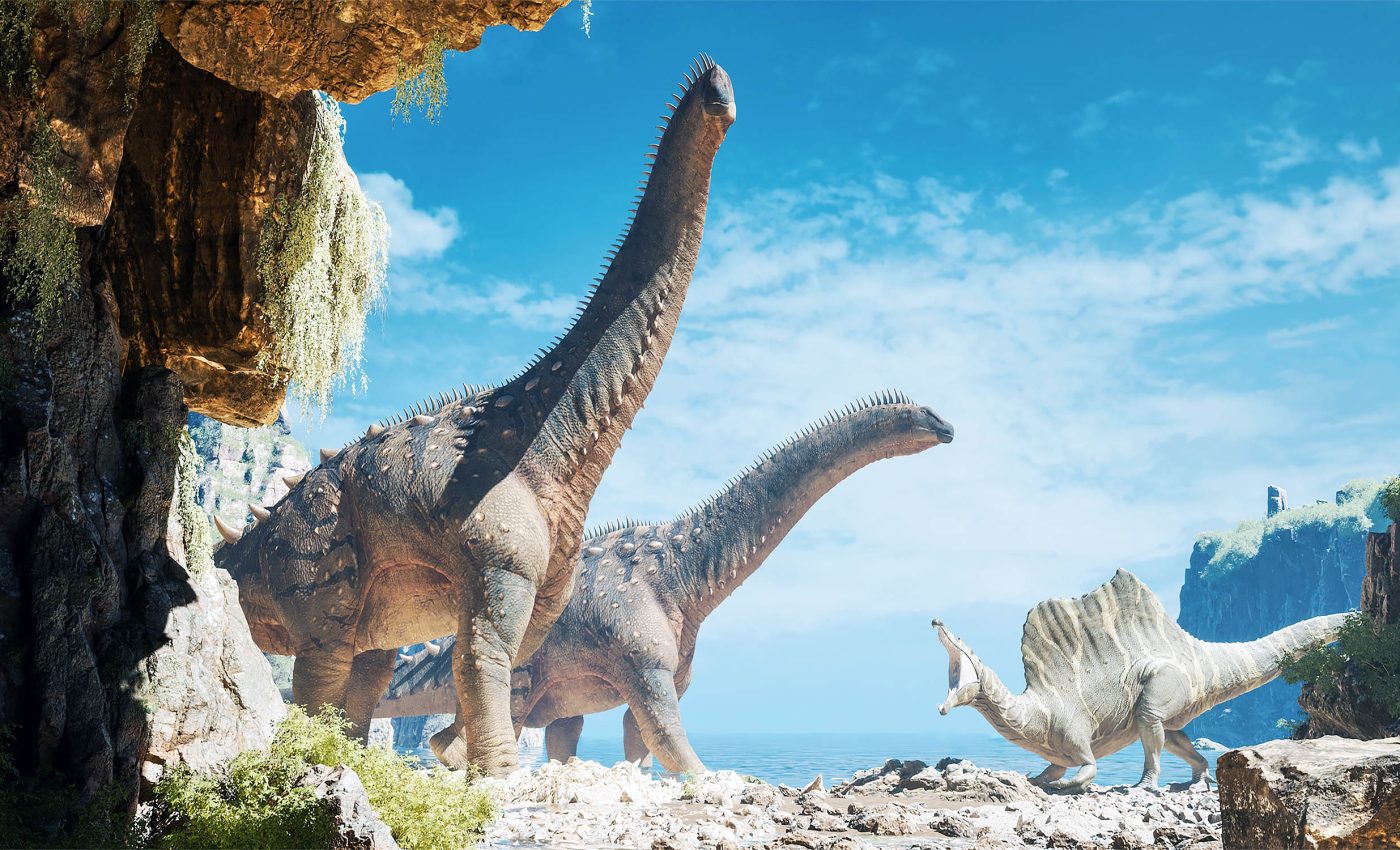
Colossal new dinosaur's fossil is so large that it broke the road during transport
Scientists in Argentina have described a new long-necked dinosaur, Chucarosaurus diripienda, that stretched about 100 feet. It lived around 90 million years ago in Patagonia, and its heavy fossil blocks even damaged a road during transport.
The find adds a big piece to the puzzle of South America’s giant plant-eaters. It is not the largest ever found, but it is large enough to sharpen how researchers think about sauropod body design.
Meet Chucarosaurus diripienda
Lead researcher Fernando E. Novas, of the Bernardino Rivadavia Natural Sciences Museum in Buenos Aires and CONICET, led the description. The partial skeleton came from Río Negro province and includes hip and limb elements.
The 2023 study reports Chucarosaurus diripienda‘s femur is about 6.2 feet long and unusually slender limb bones.
These appendicular bones, limb bones from shoulders to toes, vary more than expected and carry signals useful for classifying relatives.
As a titanosaur, a Cretaceous long-necked plant-eating dinosaur group, Chucarosaurus diripienda would have browsed high vegetation. Its long tail likely served as a deterrent against large predators patrolling the same habitats.
The name fits the field story. Chucaro refers to something hard and indomitable, while diripienda means scrambled, a nod to the scattered bones and the rough trip to the lab.
What the bones say
The team used phylogenetic analysis, a method to infer evolutionary relatives, to place the animal among other giant South American sauropods.
The limb-bone proportions help anchor its spot on the family tree and show why legs, not just backbones, matter for classification.
They place Chucarosaurus diripienda inside Colossosauria, a cluster of the biggest titanosaurs, a result that aligns with earlier work that defined that clade.
That grouping includes heavy hitters such as Argentinosaurus and Patagotitan, but limb details show these giants did not all solve size in the same way.
The femur, tibia, and ischium reveal a mix of strength and lightness. Slender shafts paired with big muscle scars suggest sturdy support without unnecessary bulk.
This matters for how we reconstruct stance and gait. If limb proportions differ among close relatives, then one model of sauropod walking cannot fit them all.
Where Chucarosaurus diripienda lived
The fossils came from the Huincul Formation in the Neuquén Basin. This Late Cretaceous rock unit in northern Patagonia has yielded a rich mix of dinosaurs and croc-line reptiles.
These rocks span the Cenomanian, the first stage of the Late Cretaceous, into the early Turonian. That timing places Chucarosaurus diripienda in an interval when giant sauropods were still thriving in the Southern Hemisphere.
Río Negro has not produced many giants of this scale. Filling that geographic gap helps test ideas about how climate and plants shaped sauropod diversity across Patagonia.
Local rivers and sand dunes likely influenced where carcasses settled and which bones survived. That patchy record is why limb bones, which fossilize well, carry extra weight in classification.
How big really matters
Mass is not measured directly, so researchers rely on mass estimation, techniques that convert bone measurements into weight.
Different methods, from limb scaling to 3D models, can yield different numbers and confidence ranges.
One influential analysis estimated its weight at roughly 69 tons using a scaling equation, with other methods producing lower values. Either way, that animal sits near the upper limit for land-dwelling vertebrates.
Chucarosaurus diripienda slots below those record holders, yet its limbs challenge a simple bigger-means-thicker rule.
The study emphasizes that appendicular, related to limbs rather than the spine, anatomy is more variable than once taught.
That variability hints at different strategies for moving heavy bodies over long distances. It also reminds us that size is only one axis of sauropod evolution, and structure matters just as much.
Fieldwork and the road story
“The weight destabilized the vehicle and caused an accident,” said Novas. No one was seriously hurt, and the bones survived the impact thanks to their density.
The asphalt did not fare as well under the weight of the Chucarosaurus diripienda fossil blocks, which says something plain about the scale of these fossils.
Field crews protected the blocks with plaster jackets, then hauled them from the steppe to the capital for study. That journey, inch by inch, is a standard part of turning hard rock into data.
In the lab, careful preparation exposed the muscle scars and joint surfaces that carry the evolutionary signals.
From there, anatomical measurements fed the tree-building analysis and the final diagnosis of a new genus and species.
The study is published in Cretaceous Research.
—–
Like what you read? Subscribe to our newsletter for engaging articles, exclusive content, and the latest updates.
Check us out on EarthSnap, a free app brought to you by Eric Ralls and Earth.com.
—–













